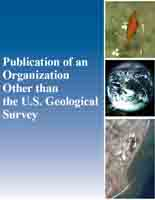In flowing waters with elevated selenium concentrations, fish are often considered to be at risk from selenium toxicity owing to dietary exposure and accumulation in ovary tissues and subsequent deformities in developing larvae. We studied selenium throughout components of the aquatic food webs at geomorphically distinct locations along the oligotrophic Kootenai River (Montana and Idaho, USA), a river with moderately elevated dissolved selenium concentrations (~ 1 µg/L). Components included water, sediment, freshly accrued biofilms, in-situ periphyton, sestonic detritus, aquatic invertebrates, and fish, with spring and fall sampling. Selenium concentrations were similar among the sediment, biofilm, periphyton, and detritus samples with most concentrations ranging between 0.5 to 2.0 (mg/kg dry weight (dw)). Among the aquatic invertebrates, the highest selenium concentrations were observed in Paraleptophlebia sp. mayflies (>15 mg/kg dw) and oligochaetes (>30 mg/kg dw). Selenium in chironomids was higher in the spring than fall, but otherwise, no consistent concentration patterns with season or feeding traits were observed. Fish tissue selenium concentrations were highly variable among species and tissue type. Selenium in fish tissues tended to be highest in livers of rainbow trout and mountain whitefish relative to egg/ovary, muscle, and carcass tissue. With northern pikeminnow, redside shiner, and slimy sculpin, selenium concentrations tended to be highest in ovary tissues. For example, selenium in rainbow trout livers ranged from an average (range) of 37 (4.5 to 151) compared to 8.7 (2.7 to 12.3) in northern pikeminnow livers. Egg/ovary concentrations ranged from a high of 26 (10.7 to 64) in redside shiner in contrast to 12.2 (6.9 to 17) mg/kg dw in slimy sculpin. A drawback of the fish-tissue approach to monitoring and managing selenium risks in freshwaters is the need to kill multiple fish per site and event. Potential alternative monitoring approaches are illustrated using aquatic invertebrates or using the food web monitoring results to derive monitoring targets for selenium in water or invertebrate tissue that could avoid the need to kill fish to assess whether fish protection guidelines are met.


